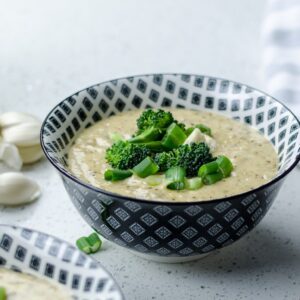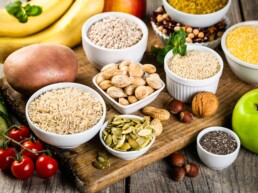What are brassicas, anyway?
And why are brassicas good for you?
If you are constantly on the lookout for products that are rich in nutrients for optimal health benefits, you are not alone. And if you’ve come across the work ‘brassicas’ somewhere in this search, then you’ve landed on a group of vegetables that have innumerable health benefits.
Many common vegetables that we eat belong to the genus Brassica. The edible members of this family are called cruciferous vegetables. This name comes from the word ‘cruciferae’ because their four-petaled flowers look like a crucifer, or cross. Among the oldest cultivated plants known to man, these vegetables have been cultivated for the past 10,000 years. Arugula, brussels sprouts, cabbage, cauliflower, broccoli, kale, mustard greens and radish are some of the more common brassicas – cruciferous vegetables.
Why are brassicas good for you?
Although cruciferous vegetables have a unique and strong flavour, they do hold up well against a variety of spices and herbs. And they provide some significant nutritional and health values. Most people have heard of their anticancer, antioxidant and anti-inflammatory properties. This protective effect comes from the compounds known as glucosinolates, which are found in brassicas. But what most people don’t know is that brassicas are also rich in both soluble and insoluble fibre, and contain Vitamins A, C, E and K, folate, potassium and calcium. So there’s good reason to include brassicas in your meals.
How can you include more cruciferous vegetables in your diet?
Undoubtedly, these healthy vegetables make a delicious addition to stir fries, salads, soups and stews. An Asian style stir-fry made with bok choy makes for a delicious bed for sticky tofu or grilled salmon. While Garlicky Broccoli with toasted Almonds makes for a healthy side for pasta and grilled chicken. And who doesn’t like a fresh Arugula Salad with pears and a zesty balsamic vinaigrette? There’s so many ways to include brassicas in your diet.
But, if you find cooking with brassicas challenging, or if you really haven’t enjoyed eating them much, here’s an easy and quick recipe – one of my favourites – for a creamy delicious Broccoli Almond Soup to get you started.

Broccoli Almond Soup
Ingredients
- 2 tsp olive oil
- 2 cups broccoli florets
- 2-3 spring onions chopped
- 2 cloves garlic minced
- 15-18 almonds
- 3 cups vegetable stock or water
- salt and pepper to taste
- slivered almonds to serve
- grated Parmesan cheese to serve, optional
Instructions
- Heat the olive oil in a large saucepan, over medium heat. Add the broccoli florets and spring onions. Sauté for a few minutes until fragrant.
- Add the garlic, vegetable stock or water and almonds, and cover and cook until the broccoli is tender.
- Cool and blend to a smooth consistency.
- Season with salt and pepper and serve warm. Garnish with slivered almonds and grated parmesan cheese.
Nutrition
If you try this recipe, share a photo with #nutritionrefinery • I'd love to see your creations on Instagram and Facebook.
SHARE

Madhavi Shilpi
Nutritionist
Prediabetes Coach
Related
Why Early Diagnosis of Prediabetes Is Key to Preventing Type 2 Diabetes
Introduction Imagine this: you’re feeling pretty healthy. Maybe you’re a…
32.8% of India Has Prediabetes — Are You Ignoring the Early Signs?
Introduction India is facing a serious health crisis: 32.8% of the…
Proteins: Building Blocks for a Stronger You
Are you curious about the role proteins play in our diet? Do you wonder…
Carbohydrates: Fuel For Your Body
Do you often wonder about the role carbohydrates play in our diet? Did…
Fats: A Balanced Perspective
Fats are good for us. Fats are bad for us. The argument rages on. Is there a…
Probiotic-rich foods: 10 health benefits
Probiotics are live microorganisms that are beneficial for our health when…
What is Prediabetes?
Have you been diagnosed with Prediabetes? Are you wondering what it actually…







